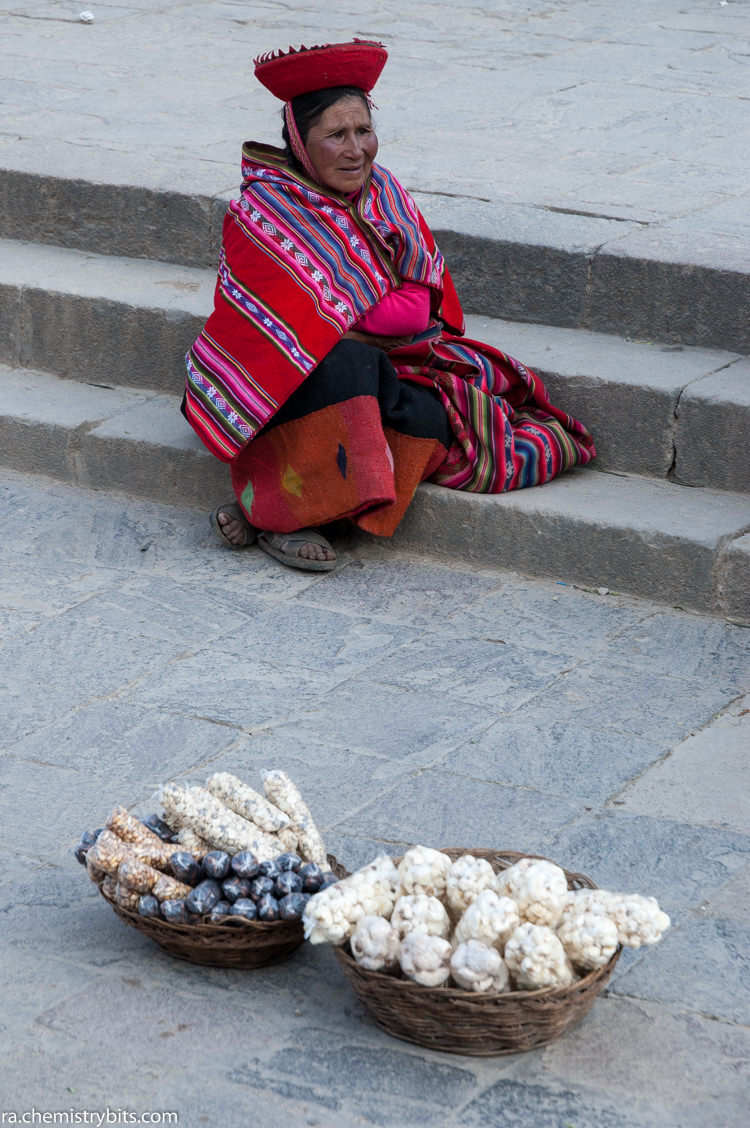Ollantaytambo é uma pequena povoação do Peru localizada no vale do rio Urubamba e na região de Cusco a apenas uns 70 km desta cidade. A pequena povoação tem origem Inca e mantém ainda muito do mais típico que se pode encontrar nesta zona do Peru. As pequenas casas desta povoação semeadas por pequenas ruas sepenteantes e empedradas são o mais próximo do que normalmente se vê do artesanato de barro e que é vendido como tipicamente peruano em feiras de artesanato por todo o mundo.
Localizada no designado “vale sagrado dos Incas”, devido a ser abrigada dos ventos, do frio, com fácil acesso a água e consequentemente manter um micro-clima ameno durante o ano, é natural que a zona tenha sido habitada desde há muito. Depois de fugir de Cusco, Ollantaytambo serviu de último refúgio e capital a Manco Inca, um dos últimos quatro Incas, antes deste se refugir nas montanhas de Vilcabamba. O termo “Inca” inicialmente designava rei ou imperador e era apenas aplicado ao chefe deste povo.
Nesta povoação fica situado uns dos mais monumentais sítios arqueológicos Incas com um enorme plano inclinado convertido em enormes terraços e designado por “fortaleza”. No topo existem uns absolutamente monumentais monólitos completamente colados, isto é, sem frestas entre os gigantescos blocos de pedra e que são parte de um templo inacabado chamado de “templo do sol”. Estes monólitos são só comparáveis aos que existem no sítio arqueológico de Sacsayhuamán mesmo nos arrabaldes de Cusco e sobranceiro a este.
Sobre uma escarpa do lado oposto e a maior altura que a “fortaleza” encontra-se um conjunto de casas que se julga terem sido utilizadas para armazenar cereais. A maior altitude, menor temperatura e a ocorrência de ventos impede que insetos e outras pragas possam devorar o armazém de colheitas.
A fotografia foi tirada no sopé antes de subir os terraços da fortaleza.
The scenery en route alone makes the trip memorable
Por fim, deixo a descrição feita por Hiram Bingham do vale do Urubamba e de Ollantaytambo no livro “Lost city of the Incas”:
Uru is the Quichua word for caterpillars or grubs, pampa means flat land. Urubamba is the “flat-land-where-there-are-grubs-or-caterpillars”. Had it been named by people who came up from a warm region where insects abound, it would hardly have been so denominated. Only people not accustomed to land where caterpillars and grubs flourished would have been struck by such a circumstance. Consequently, the valley was probably named by the plateau dwellers who were working their way down into a warm region where butterflies and moths are more common.
Notwithstanding its celebrated caterpillars, we found Urubamba’s gardens to be full of roses, lilies, and other brilliant flowers. There were orchards of peaches, pears, and apples; there were fields where luscious strawberries are raised for the Cuzco market. Apparently, the grubs do not get everything. This is the valley of Yucay where Sayri Tupac lived. No wonder it was a favourite resort of the Incas.
The first day down the Urubamba Valley brought us to romantic Ollantaytambo, described in glowing terms by Castelnau, Marcou, Wiener, and Squier many years ago. It has lost none of its charm, even though Marcou’s drawings are imaginary and Squier’s exaggerated. Here, as at the town of Urubamba, there are flower gardens and highly cultivated green fields. The brooks are shaded by willows and poplars. Above them are magnificent precipices crowned by snow-capped peaks. The Village itself was once the capital of an ancient principality whose history is shrouded in mystery. There are ruins of Inca gabled buildings, storehouses, “prisons”, or “monasteries”, perched here and there on well-nigh inaccessible crags above the village. Below are broad terraces which will stand for ages to come as monuments to the energy and skill of a bygone race, who were great agriculturists.
The “fortress” is on a little hill, surrounded by steep cliffs, high walls, and hanging gardens so as to be difficult of access. Centuries ago, when the tribe which cultivated the rich fields in this valley lived in fear and terror of their savage neighbours, this hill offered a place of refuge to which they could retire. It may have been fortified at that time. As centuries passed in which the land came under the control of the Incas, whose chief interest was the peaceful promotion of agriculture, it is likely that this “fortress” became a royal garden. The six great slabs of reddish granite weighing 15 or 20 tons each, and placed in line on the summit of the hill, were brought from a quarry several miles down the valley and at a lower level, so they had to be dragged up hill with an immense amount of labour and pains. They were probably intended to be a record of the magnificence of an able ruler. His name may have been Ollantay, a celebrated Prince.
Fortunately for those who are interested in ancient Peru, Ollantaytambo can now be reached from Cuzco both by train and automobile. The scenery en route alone makes the trip memorable.
